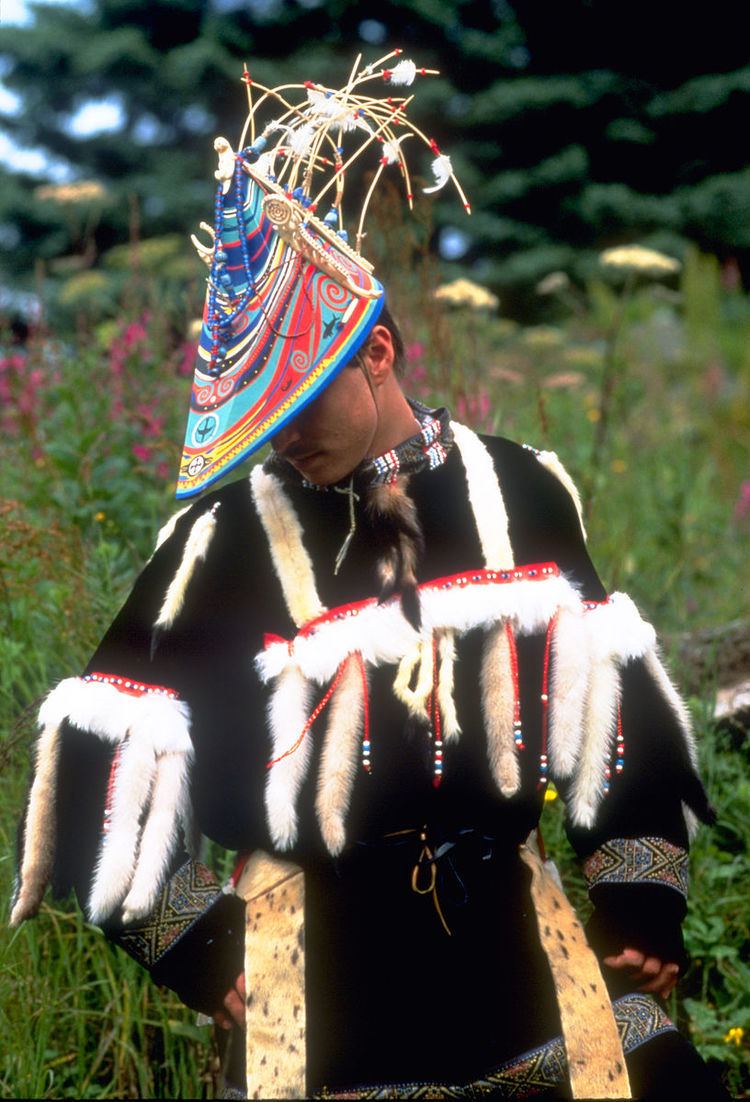 | ||
The Alutiiq people (pronounced /əˈluːtɪk/ in English; from Promyshlenniki Russian Алеутъ, "Aleut"; plural often "Alutiit"), also called by their ancestral name Sugpiaq (/ˈsʊɡˌbjɑːk/ or /ˈsʊɡpiˌæk/; plural often "Sugpiat") as well as Pacific Eskimo or Pacific Yupik, are a southern coastal people of Alaska Natives. Their language is called Sugstun. It is one of Eskimo languages, belonging to the Yup’ik branch of these languages. They are not to be confused with the Aleuts, who live further to the southwest, including along the Aleutian Islands.
At present, the most commonly used title is Alutiiq [sg] Alutiik [dual] Alutiit [pl]. However, these terms derive from the names (Алеутъ Aleut) that Russian fur traders and settlers gave to the native people in the region. But, the ethnonyms of Sugpiaq-Alutiiq are a predicament.
Russian occupation began in 1784 with the massacre of hundreds of Sugpiat at Refuge Rock (Awa'uq) just off the coast of Sitkalidak Island near the present-day village of Old Harbor (Nuniaq). The Sugpiaq term for Aleut is Alutiiq. All three names (Alutiiq, Aleut, and Sugpiaq) are used now, according to personal preference.
Some Alaska Natives from the region have advocated the use of the terms that the people use to describe their people and language: Sugpiaq [sg] Sugpiak [dual] Sugpiat [pl] to describe the people (meaning "the real people") and Sugstun, Sugcestun, Sugt'stun, Sugtestun to describe the language. They traditionally lived a coastal lifestyle, subsisting primarily on ocean resources such as salmon, halibut, and whale, as well as rich land resources such as berries and land mammals. Before contact with Russian fur traders, the Alutiiq lived in semi-subterranean homes called ciqlluaq.
In the 21st century, the Alutiiq today live in coastal fishing communities, where they work in all aspects of the modern economy, while also maintaining the cultural value of subsistence. In 2010 the high school in Kodiak responded to requests from students and agreed to teach the Alutiiq language. The Kodiak dialect of the language was being spoken by only about 50 persons, all of them elderly, and the dialect was in danger of being lost entirely.
Their traditional homelands include Prince William Sound and outer Kenai Peninsula (Chugach Sugpiaq), the Kodiak Archipelago and the Alaska Peninsula (Koniag Alutiiq). In the early 1800s there were more than 60 Alutiiq villages in the Kodiak archipelago with an estimated population of 13,000 people. Today more than 4,000 Alutiiq people live in Alaska.
